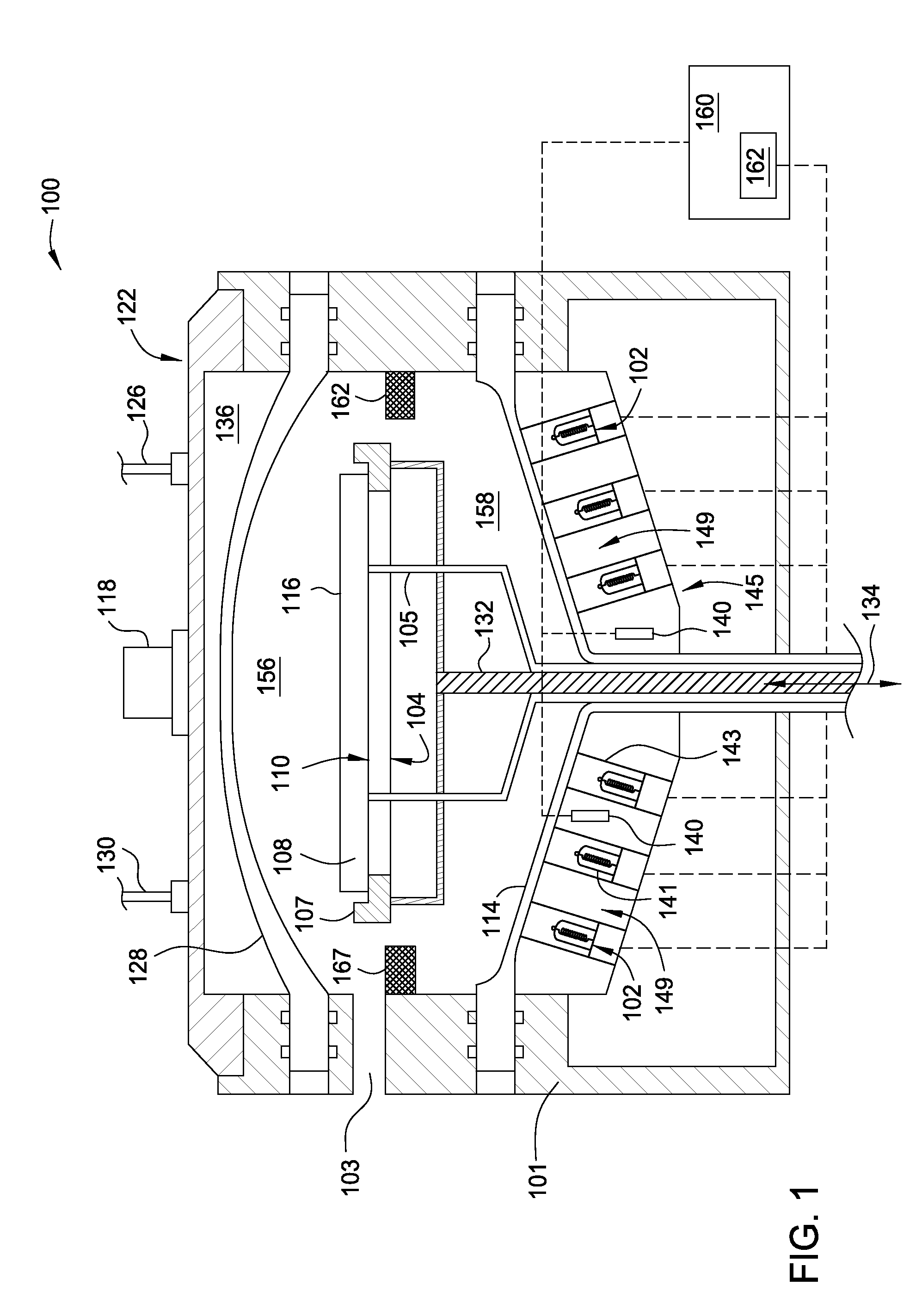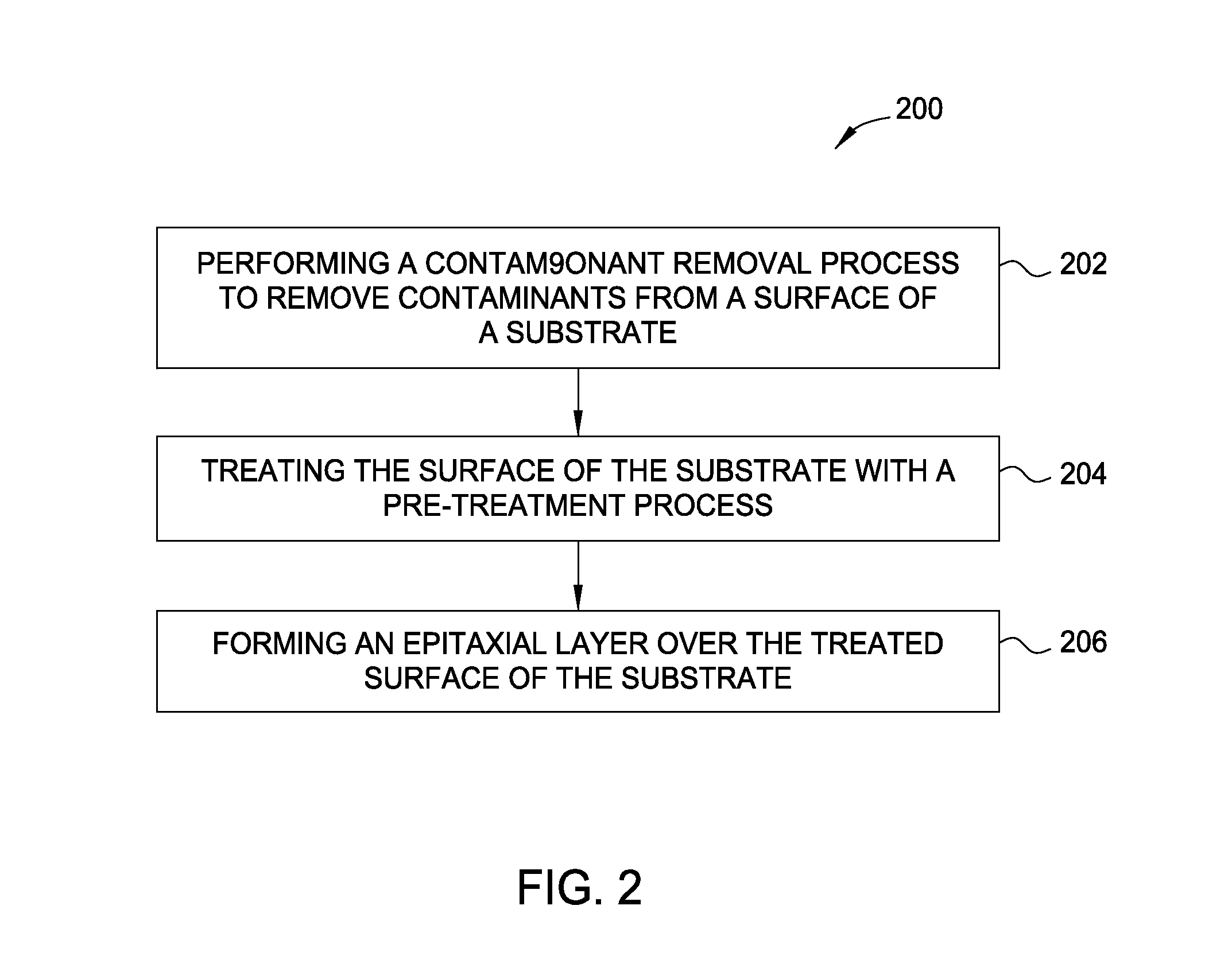Pre-clean of silicon germanium for pre-metal contact at source and drain and pre-high k at channel
a technology of silicon germanium and pre-metal contact, applied in the field of pre-cleaning, can solve the problems of difficult removal during the cleaning of the substrate, negatively affecting the quality of the epitaxial layer, and susceptible surfaces of monocrystalline silicon and epitaxial silicon layers
- Summary
- Abstract
- Description
- Claims
- Application Information
AI Technical Summary
Benefits of technology
Problems solved by technology
Method used
Image
Examples
Embodiment Construction
[0018]Implementations of the present disclosure generally relate to methods for removing contaminants and native oxides from substrate surfaces. The methods generally include removing contaminants disposed on the substrate surface using hydrogen radicals, and then cleaning the substrate surface by use of a remote plasma assisted dry etch process.
[0019]FIG. 1 is a schematic cross-sectional view of a processing chamber 100 that may be used to perform certain processes according to implementations of the present disclosure. The processing chamber 100 may be used to process one or more substrates, including the deposition of a material on an upper surface of a substrate 108. The processing chamber 100 generally includes an array of radiant heating lamps 102 for heating, among other components, a back side 104 of a substrate support 107 disposed within the processing chamber 100. The substrate support 107 may be a ring-like substrate support as shown, which supports the substrate from th...
PUM
| Property | Measurement | Unit |
|---|---|---|
| thickness | aaaaa | aaaaa |
| thickness | aaaaa | aaaaa |
| thickness | aaaaa | aaaaa |
Abstract
Description
Claims
Application Information
 Login to View More
Login to View More - R&D
- Intellectual Property
- Life Sciences
- Materials
- Tech Scout
- Unparalleled Data Quality
- Higher Quality Content
- 60% Fewer Hallucinations
Browse by: Latest US Patents, China's latest patents, Technical Efficacy Thesaurus, Application Domain, Technology Topic, Popular Technical Reports.
© 2025 PatSnap. All rights reserved.Legal|Privacy policy|Modern Slavery Act Transparency Statement|Sitemap|About US| Contact US: help@patsnap.com



